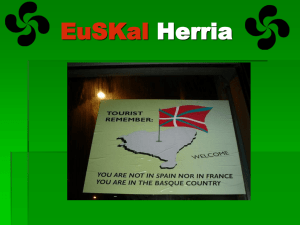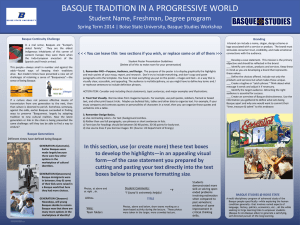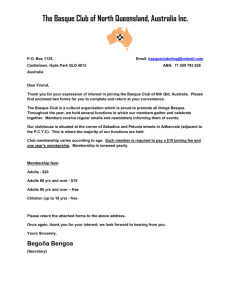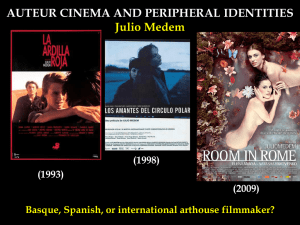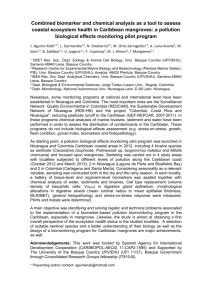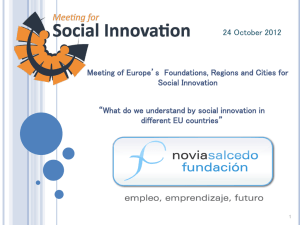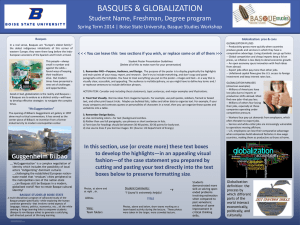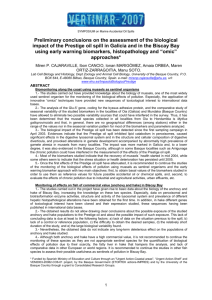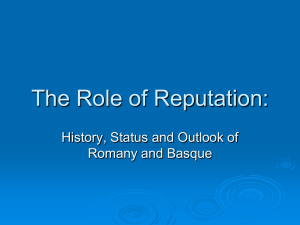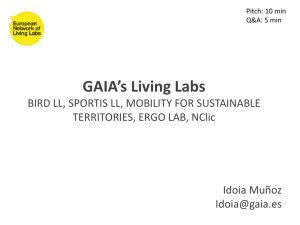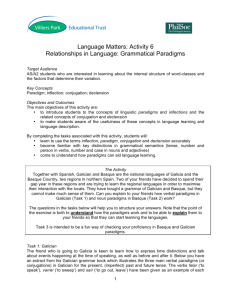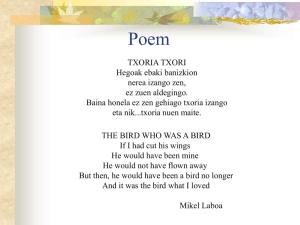In the Making of Basque America: Basque American Topics Reach
advertisement
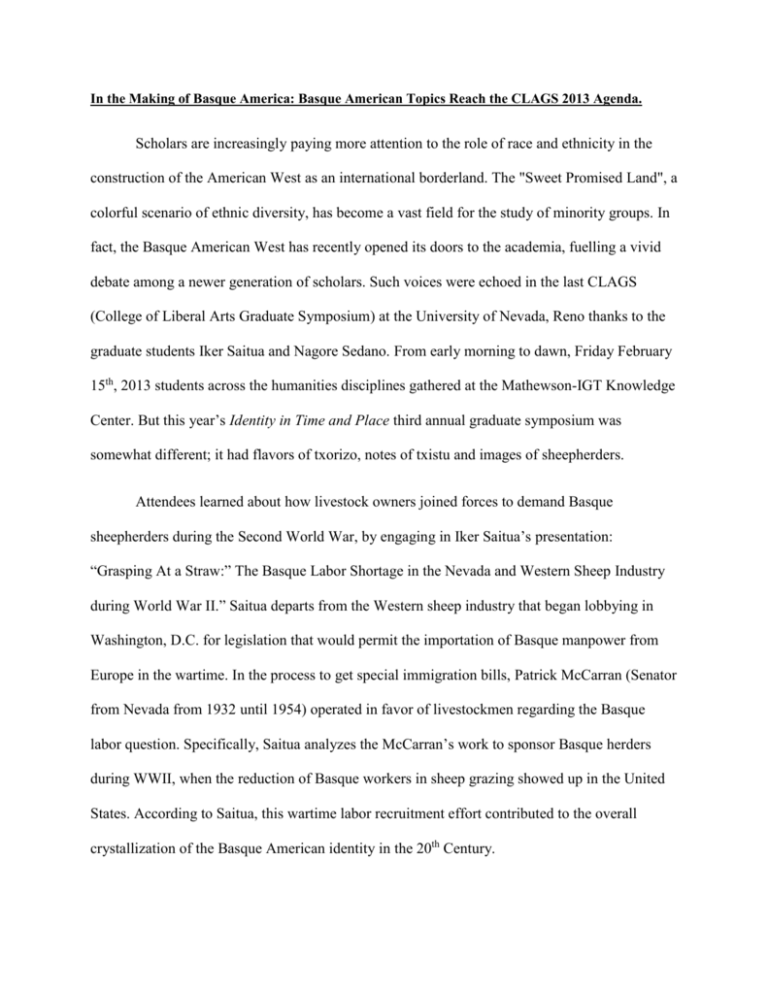
In the Making of Basque America: Basque American Topics Reach the CLAGS 2013 Agenda. Scholars are increasingly paying more attention to the role of race and ethnicity in the construction of the American West as an international borderland. The "Sweet Promised Land", a colorful scenario of ethnic diversity, has become a vast field for the study of minority groups. In fact, the Basque American West has recently opened its doors to the academia, fuelling a vivid debate among a newer generation of scholars. Such voices were echoed in the last CLAGS (College of Liberal Arts Graduate Symposium) at the University of Nevada, Reno thanks to the graduate students Iker Saitua and Nagore Sedano. From early morning to dawn, Friday February 15th, 2013 students across the humanities disciplines gathered at the Mathewson-IGT Knowledge Center. But this year’s Identity in Time and Place third annual graduate symposium was somewhat different; it had flavors of txorizo, notes of txistu and images of sheepherders. Attendees learned about how livestock owners joined forces to demand Basque sheepherders during the Second World War, by engaging in Iker Saitua’s presentation: “Grasping At a Straw:” The Basque Labor Shortage in the Nevada and Western Sheep Industry during World War II.” Saitua departs from the Western sheep industry that began lobbying in Washington, D.C. for legislation that would permit the importation of Basque manpower from Europe in the wartime. In the process to get special immigration bills, Patrick McCarran (Senator from Nevada from 1932 until 1954) operated in favor of livestockmen regarding the Basque labor question. Specifically, Saitua analyzes the McCarran’s work to sponsor Basque herders during WWII, when the reduction of Basque workers in sheep grazing showed up in the United States. According to Saitua, this wartime labor recruitment effort contributed to the overall crystallization of the Basque American identity in the 20th Century. The Basque American literature also made it to CLAGS agenda with Nagore Sedano’s presentation “Basque American Third Generation: Rethinking Monique Urza’s The Deep Blue Memory”. Sedano contrasts the work of second and third generations by employing more modern postulates that apply better to the study of later narratives, such as transculturalism, feminism and postnationalism. In this specific analysis of Urza’s book, Sedano surveys its unique contribution to the Basque American writing by reflecting Luce Irigaray’s notion of the “feminine disruptive excess”. The Deep Blue Memory rescues the neglected figure of the Basque grandmother and makes it the central theme of the narrative, breaking with the sheepherder archetype tradition. This narration, as well as other third generation stories, speaks of a Basque American hybrid identity that finds its perpetuation in newer generations to come. Both presentations, as parts of broader research projects, bring fresh air into the study of Basque American history and literature in the West. Despite their different academic approaches, Saitua and Sedano are working together on future cross-disciplinary projects that examine the making of Basque America. Bearing resemblance to this year’s successful graduate symposium, the cooperation of these two graduate students is a model of interdepartmental collaboration in liberal arts.
